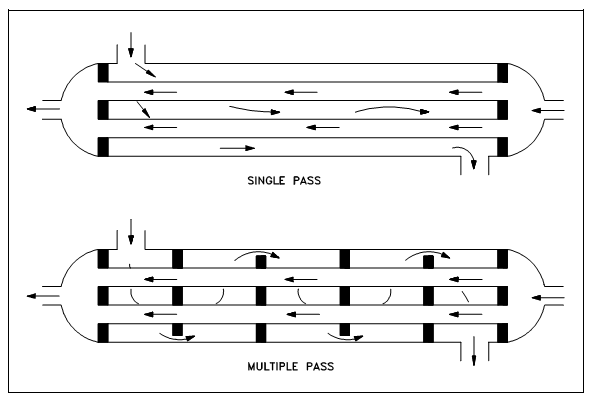Single and Multi-Pass Heat Exchangers:
In fact, many large heat exchangers are not purely parallel flow, counter flow, or cross flow; they are commonly a mixture of the two or all three categories of heat exchangers. This is because of the fact which real heat exchangers are more complex than the simple elements displays in the idealized figures used above to depict each categories of heat exchanger. The purpose for the combination of the several categories is to maximize the effectiveness of the heat exchanger inside the restrictions placed on the design. Which is, size, weight, cost, need efficiency, type of fluids, temperatures, and operating pressures, all help denotes the complexity of a specific heat exchanger.
One method which combines the features of two or more heat exchangers and improves the performance of a heat exchanger is to have the two fluids pass every other various times inside a single heat exchanger. While a heat exchanger's fluids pass each other more than once, a heat exchanger is known as a multi-pass heat exchanger. The heat exchanger is called a single-pass heat exchanger if the fluids pass each other only at one. Look at the above Figure for an instance of both categories.
Generally, the multi-pass heat exchanger reverses the flow within the tubes through use of one or more sets of "U" bends in the tubes. A "U" bends permit the fluid to flow back and forth across the length of the heat exchanger. An other method to achieve multiple passes is to insert baffles in the shell side of the heat exchanger. Those direct the shell side fluid back and forth across the tubes for achieve the multi-pass effect.

Figure: Single and Multi-Pass Heat Exchangers